The electromagnetic spectrum displays the components of light arranged according to their wavelengths. The spectrum usually consists of both visible and invisible light. Together, they are called electromagnetic radiation. They are electromagnetic because they consist of both an electric and a magnetic field. And these fields oscillate and travel at the speed of light: 3.00 x 108m/s. Here is an illustration of the electromagnetic spectrum:
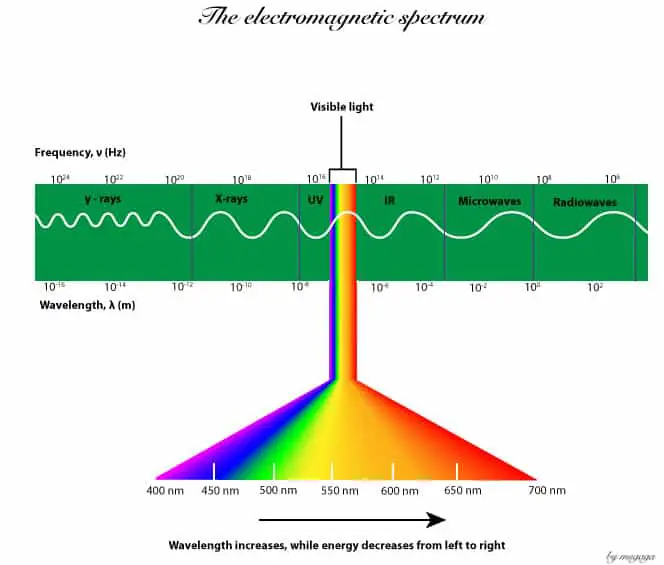
From the spectrum, we can see that the components of light are arranged according to their wavelength and frequency. When light strikes our eyes, we are able to see some of the light, but at the same time we are unable to see most of it. The light we can’t see is called invisible light, while the light we can see is called visible light. The visible light, which forms a tiny fraction of the electromagnetic spectrum, runs from about 400 nm to 700 nm. Usually, we see the different wavelengths of visible light as colors. And these colors are violet, blue, green, yellow, orange, and red, and they are shown in the typical rainbow colors in the electromagnetic spectrum. When the wavelengths of all these colors hit our eyes at once , we see white light. Usually, we can use a glass prism to separate this white light into different wavelengths, called a continuous spectrum. It is called continuous because the different wavelengths or colors blend smoothly into one another without leaving any gaps.
How does the wavelength vary as you move your eyes from left to right along the spectrum?
As you move from left to right along the spectrum, the wavelength increases, while the frequency decreases.
Frequency is the number of waves that pass a given point in one second (per second). While wavelength is the distance between adjacent crests (tops) or troughs (bottoms) in a wave. Here is a wave showing the crests and troughs:
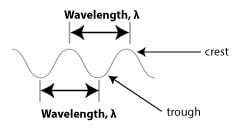
From the wave, we can say that its intensity or brightness can vary depending on the height of the crest. This height has a fancy name called the amplitude. Therefore, the higher the amplitude, the more intense the radiation. And the lower the amplitude, the less intense the radiation. For instance, blue light of a particular frequency and wavelength can vary from bright (higher amplitude) to dim (lower amplitude). Here is an illustration of two waves with the exact same frequency and wavelength, but differing amplitude.
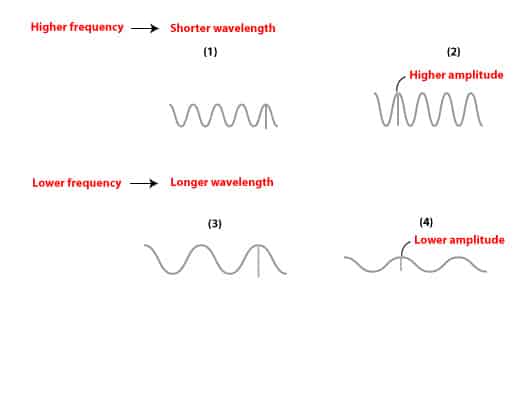
As we can see, wave (1) and (2) have the exact same frequency and wavelength. However, wave (2) has a higher amplitude than wave (1). In other words, wave 2 will be brighter than wave 1.
Similarly, wave (3) and (4) have the exact same frequency and wavelength. However, wave (4) has a lower amplitude than wave (3). In other words, wave (3) will be brighter than wave (4).
In addition, we can say that the higher the frequency, the shorter the wavelength, and the lower the frequency, the longer the wavelength. As a result, the frequency of electromagnetic radiation is related to its wavelength by the formula:
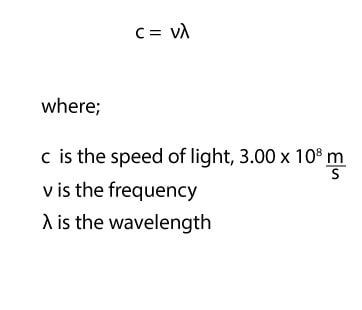
Now, lets use the above equation to solve the following problem
Question
A computer processor operates at 700 MHz. Calculate the wavelength of the radiation
Solution
To calculate the wavelength, we must use the formula:

However, since we want wavelength, we must rearrange the equation to isolate wavelength. If we divide both sides of the equation by frequency, we will isolate wavelength, but we also know that the speed of light, c is 3.00 x 108m/s, and we also know that 700 MHz = 700 x 106s-1, where mega is 106. If we take all that into account, here is how the calculation will appear:
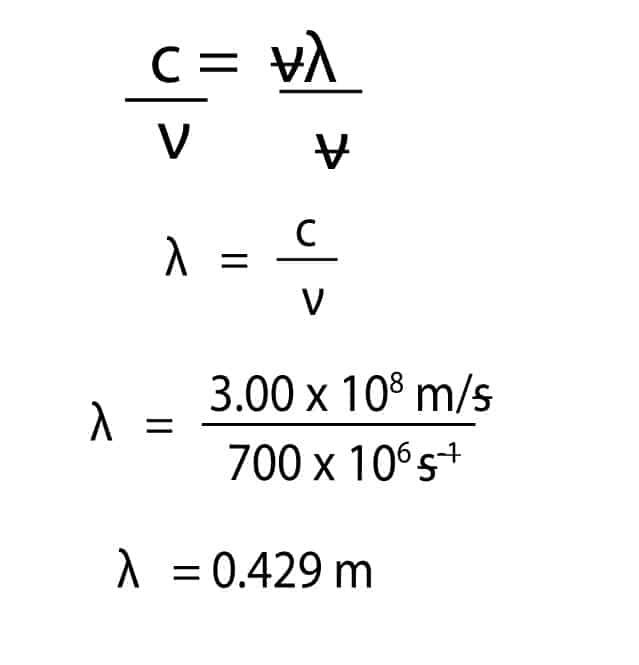
As you can see, these calculations only show the relationship between speed, frequency and wavelength of light. If you want to learn more about energy and why heated objects emit different types of radiation, click here.